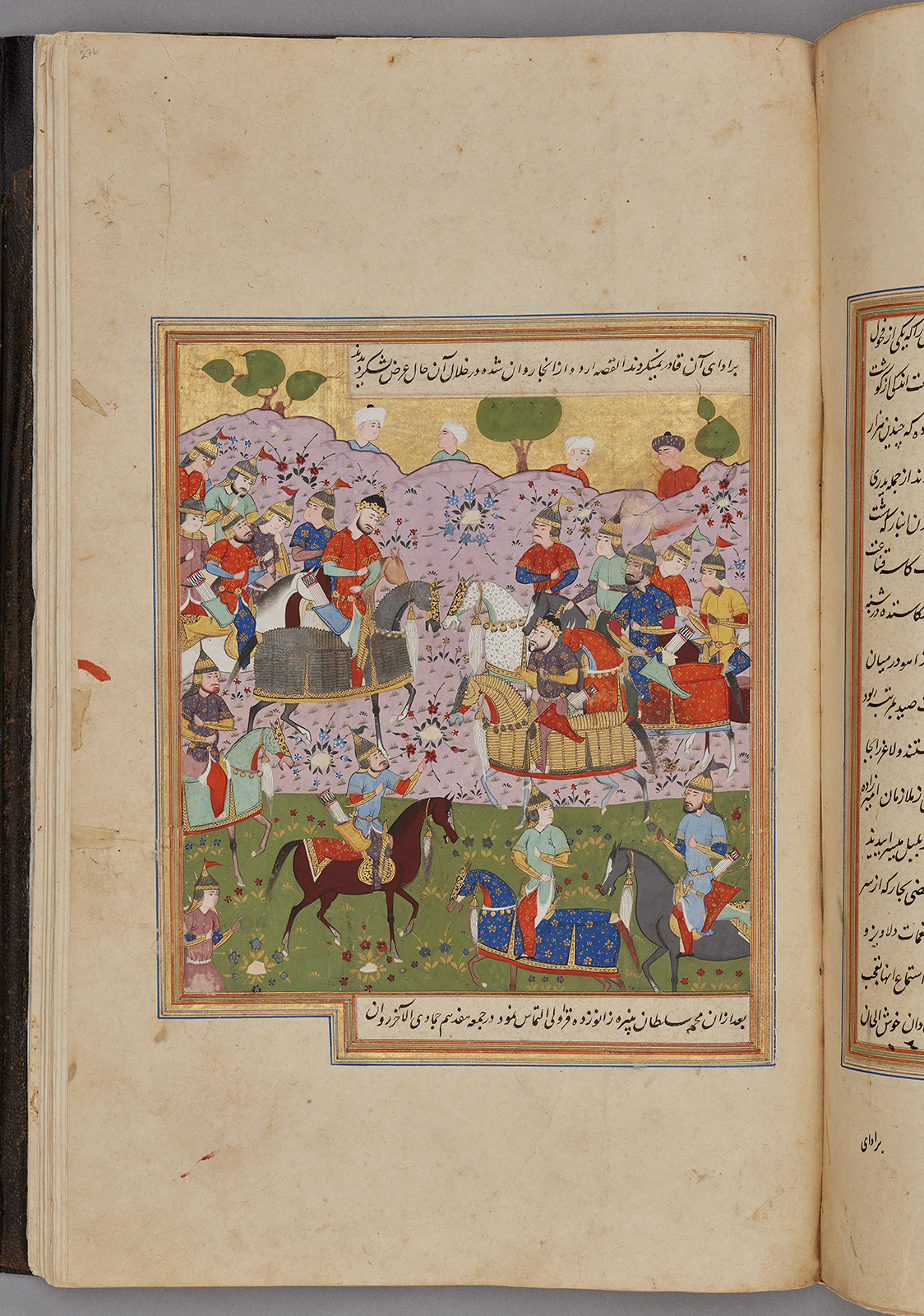Click on the image to zoom
Timur and his army, Folio from a manuscript of Nigaristan
- Accession Number:AKM272.f276r
- Creator:Author: Ahmad b. Muhammad Ghaffari, Persian, died 1567 Scribe: Ahmad al-Shirazi
- Place:Iran, Shiraz (probably)
- Dimensions:38.7 cm × 25 cm × 6.4 cm
- Date:1573-74 CE/980 AH/AH 980
- Materials and Technique:Ink, opaque watercolour, and gold on paper
The miniature painting "Timur and his army" is from an intact manuscript of Kitab-i Nigaristan, a collection of anecdotes and historical incidents written in prose by the historian and scholar Ahmad Muhammad Ghaffari (1504–1567/68) of Kashan in 1551–2. This illustrated manuscript, dated 1573, was probably produced in a Shiraz workshop.
See AKM272 for more information about the manuscript and links to the other illustrations.
Further Reading
The painting is divided into three parallel parts. The middle and largest area—where most are gathered—extends to the upper horizon line. The lower area consists of a green, meadow-like ground on which four more riders are placed. At the very top, behind the edge of the steppe landscape, some figures whose upper bodies can only be seen stand together with some trees in front of a golden sky. The central field provides the backdrop for the action of a king on horseback (at left) and another crowned person (at right). Behind each figure are others wearing helmets.
The crowned figure is Timur who is sampling his army for an attack on Tughtamush, who is an apostate vassal.
This miniature painting uses the typology of a typical battle scene developed in the Timurid period (1370–1507). In a battle scene, the troops face each other from opposite sides of the painting and are identified by their pennants. The main battle takes place at the middle of the image.
- Elika Palenzona-Djalili
References
Sela, Ron. The Legendary Biographies of Tamerlane: Islam and Heroic Apocrypha in Central Asia. New York, Cambridge: Cambridge University Press, 2011. ISBN: 9781108447287
Sims, Eleanor. Peerless Images: Persian Painting and Its Sources. New Haven and London: Yale University Press, 2002. ISBN: 9780300090383
Note: This online resource is reviewed and updated on an ongoing basis. We are committed to improving this information and will revise and update knowledge about this object as it becomes available.


